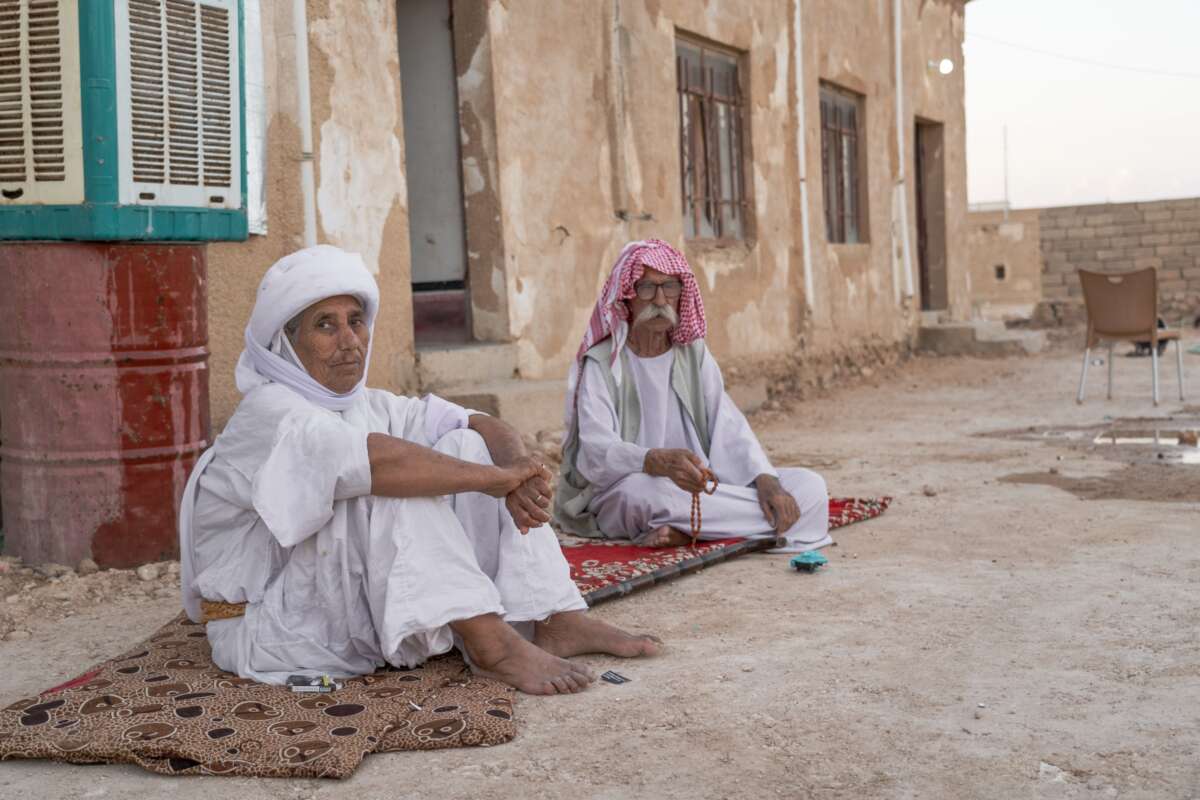Support justice-driven, accurate and transparent news — make a quick donation to Truthout today!
Fadil Murat Shamo, 22, is still struggling to rebuild his life after ISIS (Islamic State of Iraq and Syria, also known as Daesh) militants killed most of his family when they took over the predominantly Yazidi district of Sinjar in northern Iraq more than a decade ago. As a child, he spent five years in ISIS captivity and was indoctrinated to become a soldier.
It was a fate that befell thousands of Yazidi, a long-persecuted group whose faith shares roots with Zoroastrianism and who were declared infidels by ISIS. About a decade after the United States invaded Iraq, sparking a sectarian civil war and creating conditions for what was then al-Qaeda in Iraq to flourish, ISIS invaded Sinjar on August 3, 2014, prompting most Yazidi to flee their homes.
The Yazidi who became trapped in Sinjar endured ineffable horrors. Within days, thousands were killed, with almost half of them executed — either shot, beheaded or burned alive — while the rest died from starvation, dehydration or injuries during the ISIS siege of Mount Sinjar, to where scores of Yazidi fled during the onslaught. Nearly 7,000 Yazidi were kidnapped. Young women and girls taken captive were sold as sex slaves, while boys like Shamo were forced to fight as child soldiers.
Nearly 2,800 of these women and children are still missing today. Some are known to be in ISIS captivity, while the whereabouts of others are uncertain. Some villages in Sinjar are mass graveyards — yet to be exhumed.
More than a decade after what the United Nations declared a genocide, traumatized Yazidi continue to trickle back to their ancestral lands in Sinjar — finding both hope and sorrow waiting for them there.
According to the International Organization for Migration (IOM), more than 100,000 Yazidi have so far returned to Sinjar, but the majority remain displaced. Those returning are battling serious physical and mental trauma — exacerbated by perpetual feelings of insecurity — while infrastructure and job opportunities are still severely lacking. Across the district, buildings and homes remain damaged or destroyed.
“Returning for those of us who lost loved ones is very hard,” Shamo tells Truthout, sitting on the floor of the home he constructed in the northern part of Sinjar after he returned in 2020. “We will never be the same again after ISIS.”
“But it brings me some happiness when I see Yazidi families coming back home. Returning will not heal us, but it is a nice feeling to see Sinjar coming back to life.”
“Wanted to Die”
Shamo was 12 years old when he was abducted by ISIS, along with his parents and siblings, including his sisters. First, the militants separated Shamo and his sisters from their parents and elder brother. Then, Shamo says, his small sisters were collected and sold into slavery, while he was transported to Mosul with 33 other boys.
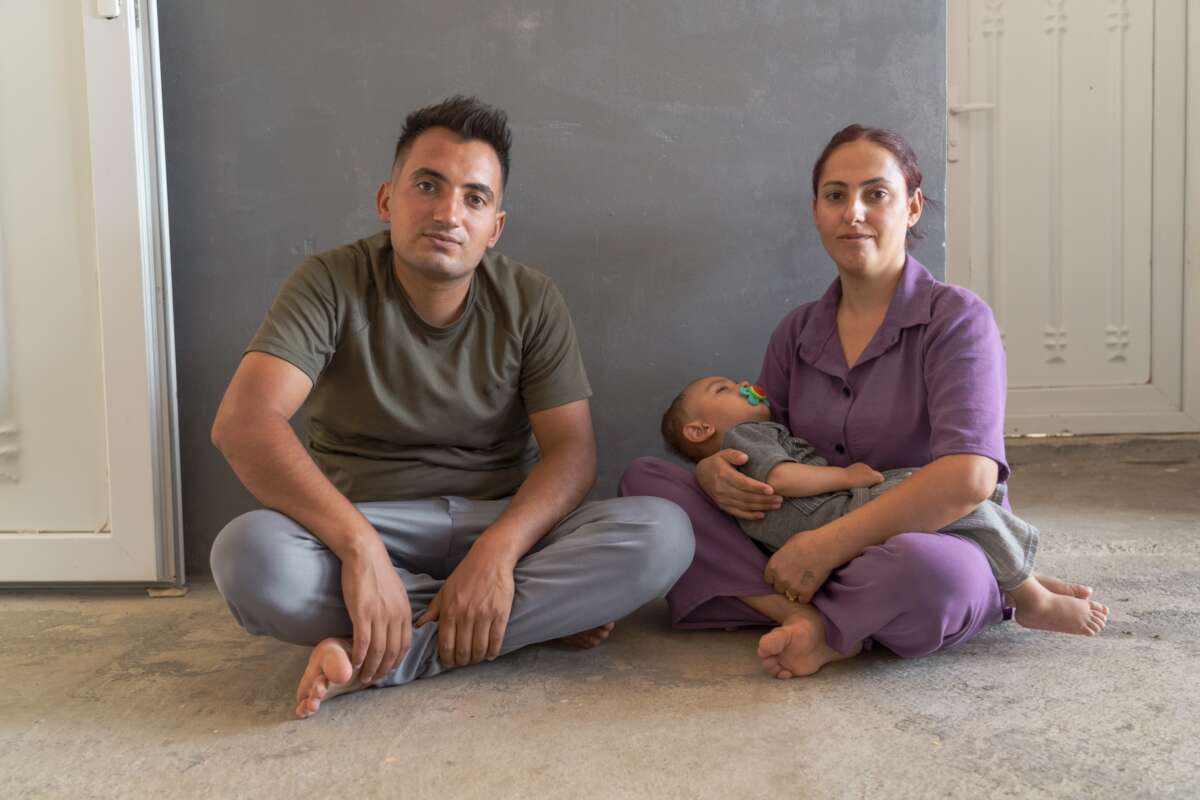
“They kept us at a private house in Mosul where we were forced to learn the Quran, their ideologies and how to fight,” Shamo remembers. “We stayed there for one year. It was like a prison. We weren’t allowed outside and we never saw the sunlight. There was just one small window in the building.”
The old city remains in complete ruins — with bullet-riddled buildings and collapsed roofs and walls.
Once the militants thought the boys were ready, they transported them to Raqqa, the capital of the Islamic State in Syria, to join their ranks as ISIS fighters. Only 10 of these boys survived, Shamo says.
“They killed our whole families so all of us just wanted to die,” Shamo recounts, fiddling with his thumbs. “The most unimaginable things became everyday life. We witnessed beheadings so often that they became normal. But we never actually believed that when we died, we would become martyrs and go to heaven. Everyone blew themselves up or died in battle because they hated this life — not because they wanted heaven in the next life.”
After three years of fighting as a soldier, Shamo was able to get smuggled out of ISIS territory, ending up in al-Hol camp (Kempa Holê) in Kurdish-controlled northern Syria, which continues to hold tens of thousands of women and children from former ISIS territory.
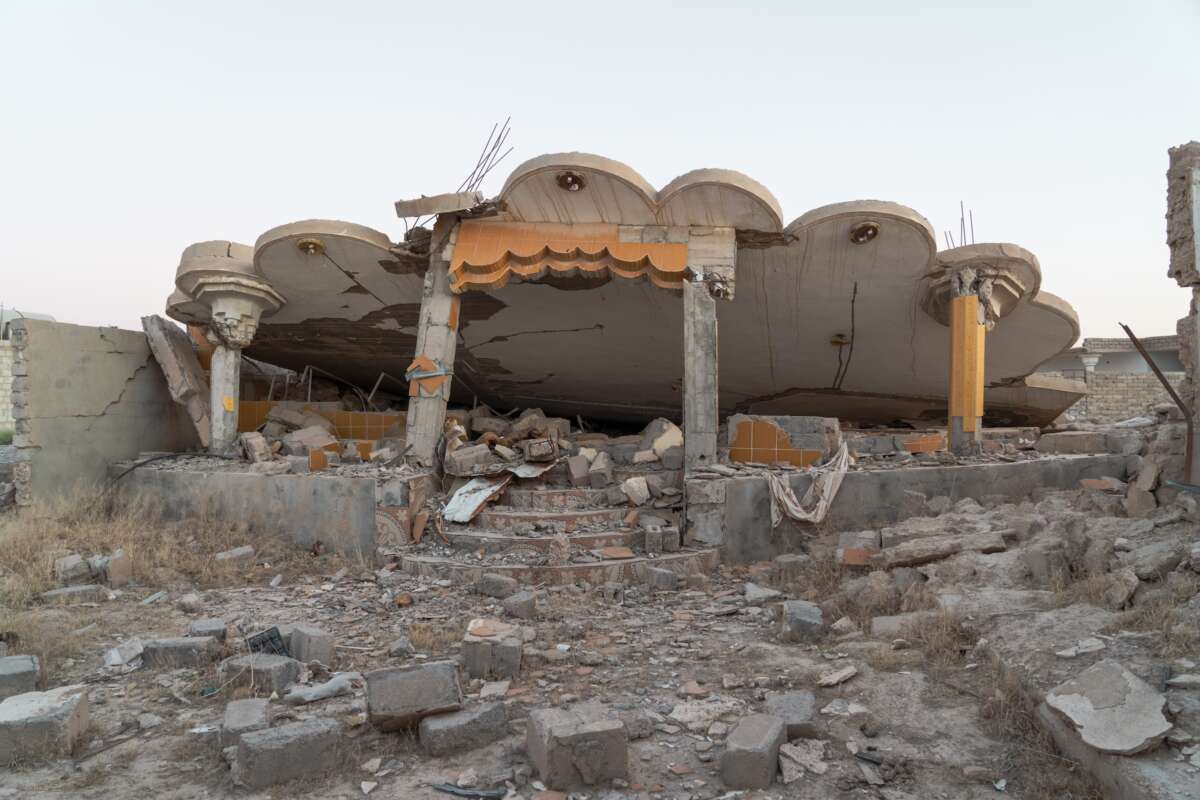
He was eventually repatriated to Iraq, where he stayed at one of numerous internally displaced people (IDP) camps in Iraqi Kurdistan. His sisters were also smuggled out of ISIS territory two years prior and are now living in the camps. His parents and brother, however, are still missing — assumed to have been killed.
In 2020, Shamo decided he would return to Sinjar. According to the IOM, which assists Yazidis to voluntarily return to Sinjar, 2020 saw the highest number of returns out of any year since the group began collecting data in 2018.
Despite finding his childhood home destroyed, Shamo saw a glimmer of hope in his return. “After I returned, I focused all my energies on rebuilding my life,” Shamo says. “I got married and had children. Now I have my own family. This has helped me to recover from what happened to me.”
“Sick of the Camps”
But not everyone returning to Sinjar is as hopeful. Others see no future there — only unresolved wounds and crumbling buildings. Sinjar’s main town still bears the scars of the fighting that raged there in 2014 until a fightback driven by Kurdish forces dislodged ISIS militants from the town the following year. The old city remains in complete ruins — with bullet-riddled buildings and collapsed roofs and walls. In some areas, there are still warning signs of the lethal threat of land mines and war munitions.
Many Yazidi do not have the money to rebuild; some are sleeping on the floors of half-standing houses. Infrastructure is still wrecked, while the federal Iraqi government and the autonomous Kurdistan Region of Iraq tussle for control over the area.
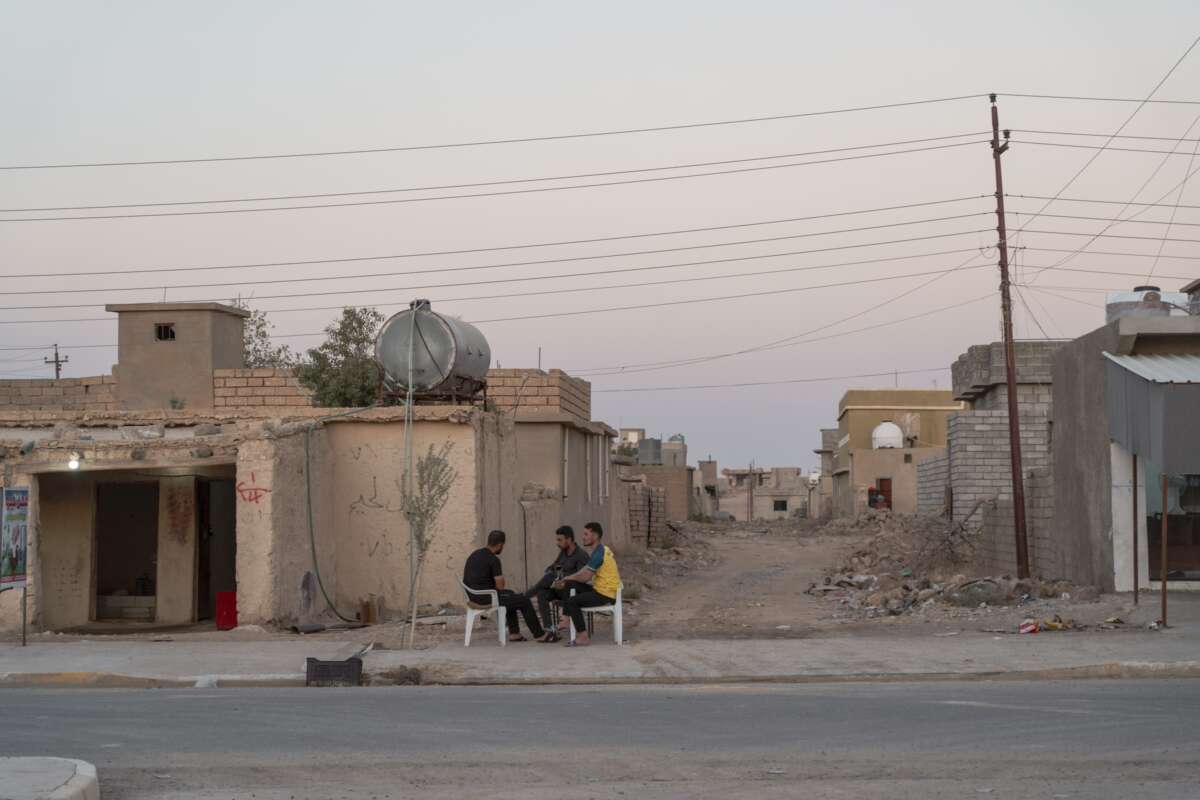
When Amy Hussein, 48, returned to Sinjar last year with his six children, ages 9 to 22, he found his home was reduced to rubble. He is now living in his brother’s home, which he was in the process of constructing before ISIS militants overran the area. His brother is living abroad in Germany, where many Yazidi were granted asylum.
“You see over there,” Hussein says, pointing to one of many abandoned homes in his small village in the northern part of Sinjar. “At this home, about 25 members of the family were taken captive by ISIS. All of them are now either killed, missing or living as refugees in Europe.” He shakes his head and digs his shoe into the dried dirt. “I came back here only because I was so sick of living in the IDP camps,” he adds.
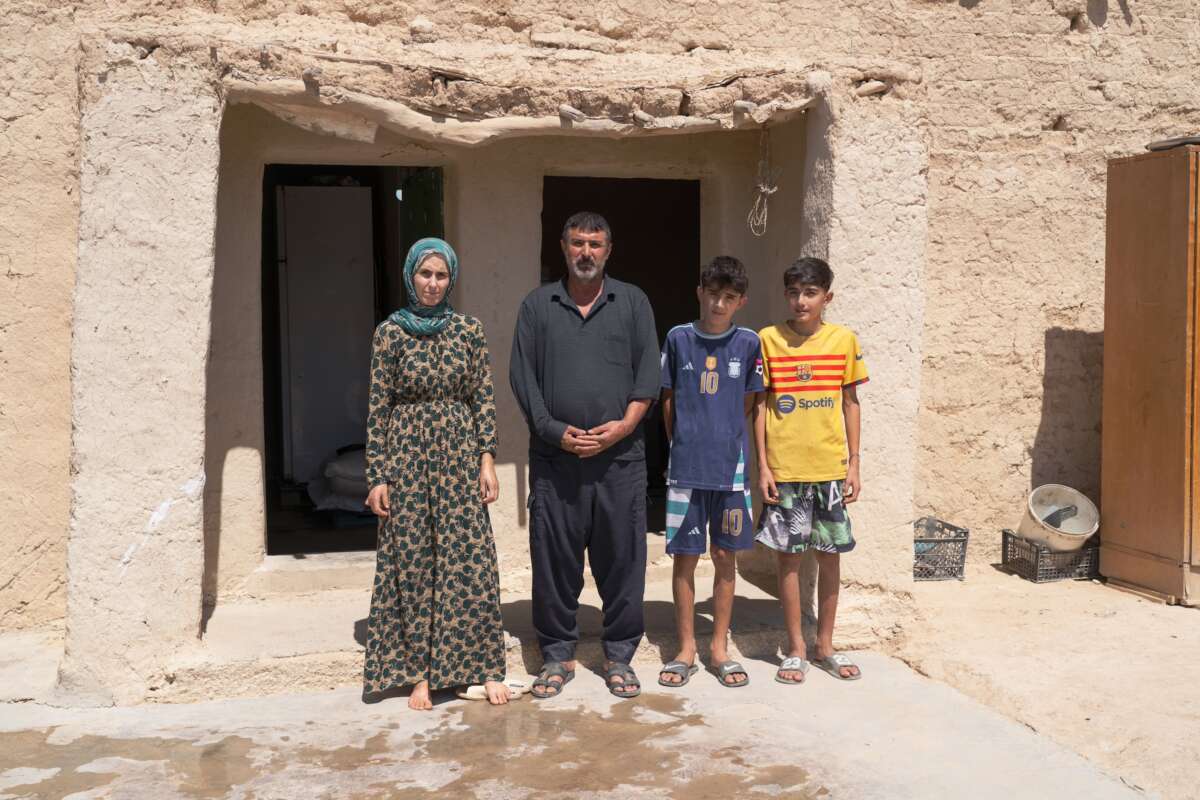
“But it’s still hard. For those of us who survived the genocide, we don’t know anything about our fate or our future.”
With ISIS’s destruction of around 80 percent of public infrastructure and 70 percent of civilian homes in Sinjar City and surrounding areas, a lack of basic services and adequate shelter means those returning are in an uphill battle to rebuild their lives. According to the IOM, there are still challenges in accessing running water, electricity, health care and education for families in Sinjar.
Public education is sometimes not readily available, in part due to damage or destruction of schools. Where it is accessible, the quality of education is undermined by overcrowding, with some schools accommodating students from multiple villages, and staffing shortages, as thousands of teachers remain displaced.
Many families here have received financial support from IOM to return and to rebuild their homes, but they say that it is not enough. Hussein, who received about 700,000 Iraqi dinar ($534) from IOM, says it helped him put up some windows and doors in his brother’s half-constructed home, but the funds quickly dried up.
About 2,200 Yazidi are receiving monthly stipends — about $650 — through the Yazidi Survivors Law, which the Iraqi parliament passed in 2021 and which provides a reparations framework for many survivors of ISIS crimes, particularly women and girls subjected to sexual violence, as well as child survivors who were abducted before the age of 18. The law focuses on the Yazidi community, but also includes reparations for survivors from the Christian, Turkmen and Shabak minority groups.
Many Yazidi do not have the money to rebuild; some are sleeping on the floors of half-standing houses.
Shamo, who was abducted by ISIS when he was 12, is a recipient of this monthly stipend, which has helped him rebuild and sustain himself in Sinjar despite widespread unemployment.
The Iraqi government, through the Ministry of Migration and Displaced (MoMD), also provides a return grant of 4 million Iraqi dinar ($3,052) for Yazidi families residing inside the IDP camps and 1.5 million Iraqi dinar ($763) for those outside the camps. Those whose homes and properties were destroyed or damaged can also apply for compensation from the government.
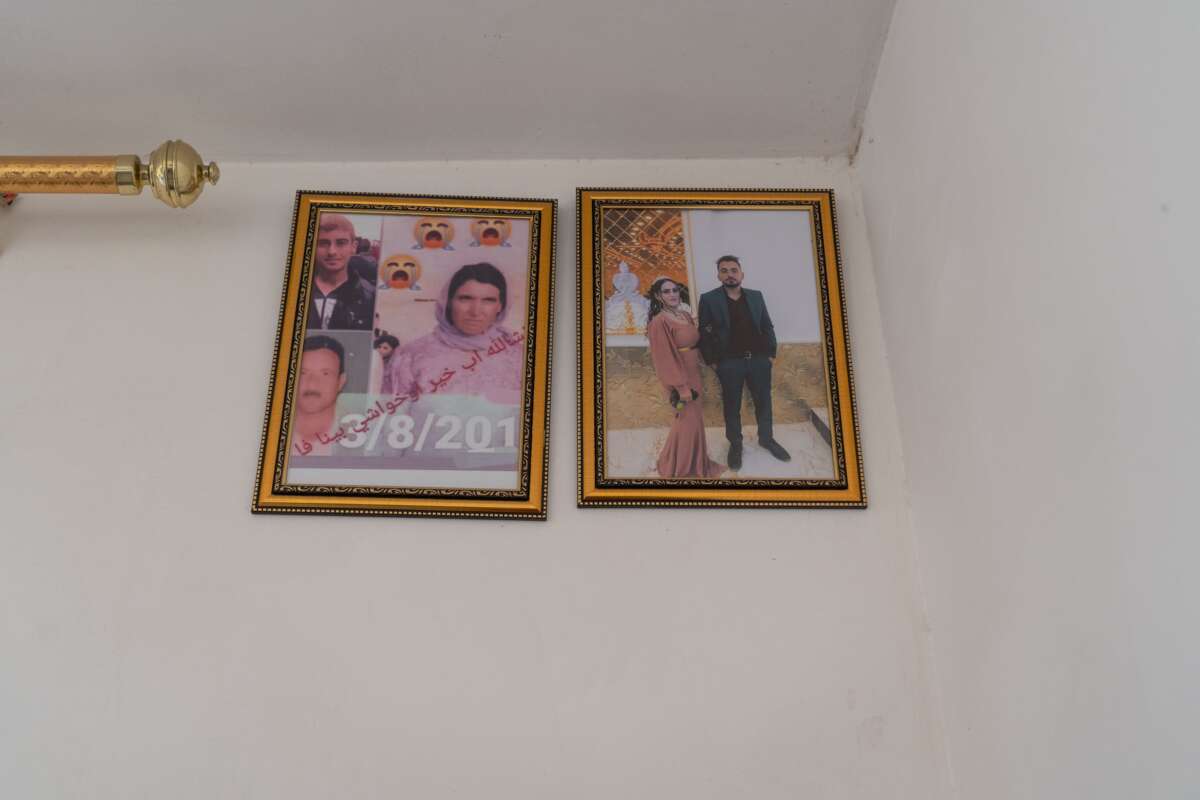
Yet of all the recently returning Yazidi Truthout spoke to, none had received this government assistance. Jamal Saido, the documentation and protection officer at Nadia’s Initiative, founded by Nobel Peace Prize Laureate and Yazidi survivor Nadia Murad, says this is likely due to the extremely slow pace of the application process, which can often drag on for many months.
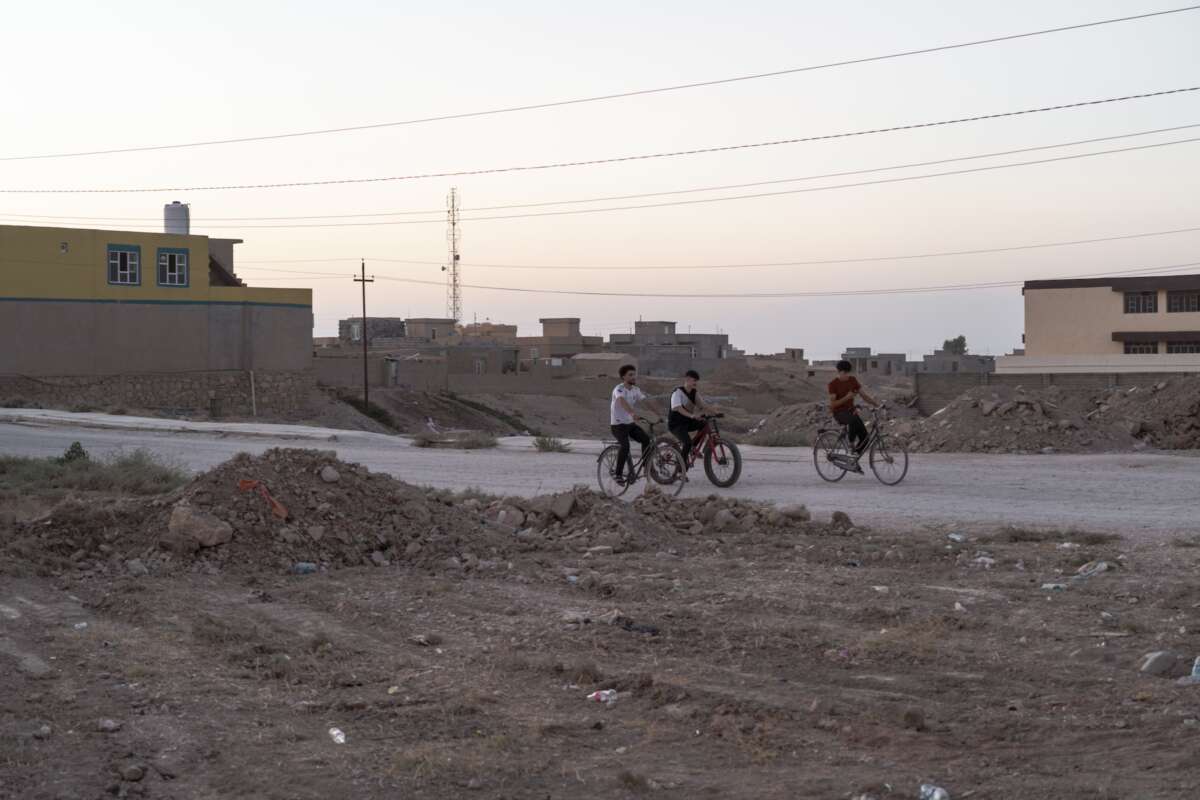
Tired of waiting, many Yazidi families have returned on their own without government or organizational support.
“Because of Fear”
Sahar Hajimalo, 30, just returned to Sinjar a few days ago — after spending more than a decade in Chamishku camp in Zakho. The mother of three children, from ages 10 years to 2 months, returned to the home her family had started constructing before the ISIS invasion.
“Living in the camps, nothing ever belonged to us,” Hajimalo tells Truthout, balancing her 2-month-old on her hip. “We wanted to return to the only things that still belong to us — our home and land.”
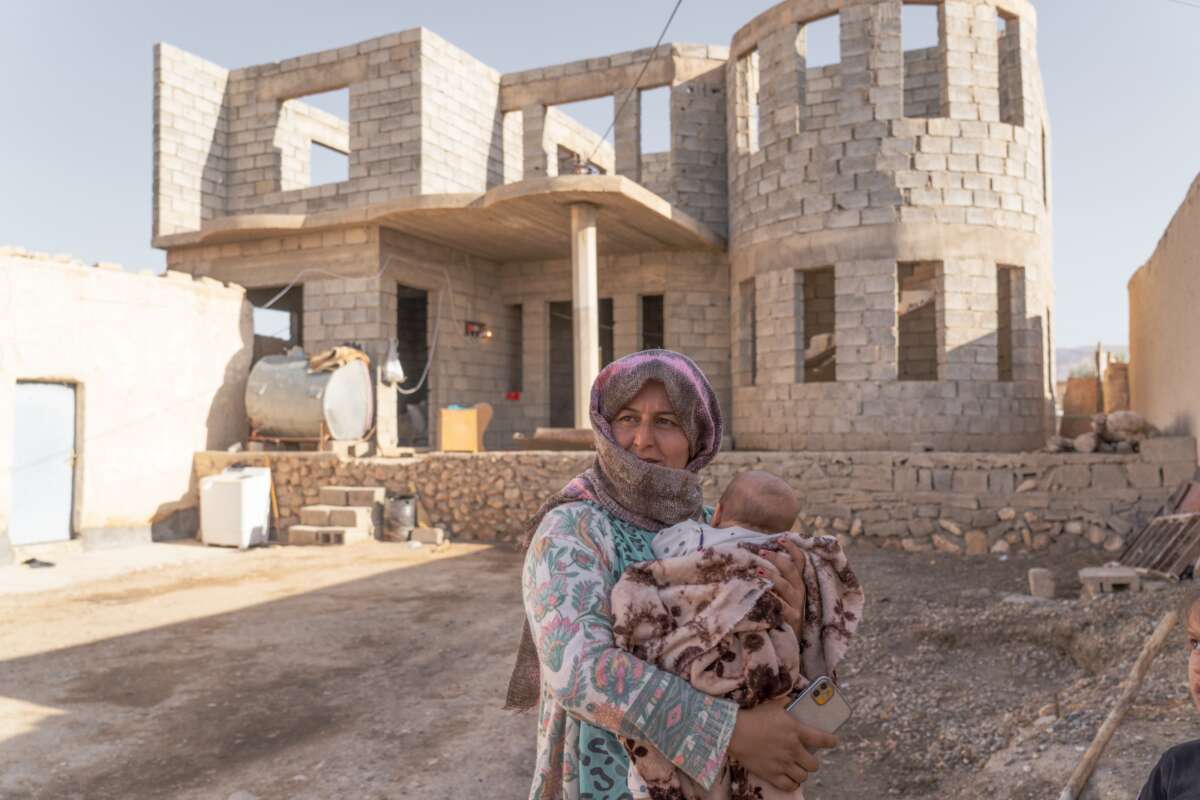
Hajimalo says she has not received any financial assistance, but decided to return on her own. Her husband is also unemployed. With much of the infrastructure and buildings still damaged or destroyed in Sinjar, along with the majority of the Yazidi population still displaced, there is a major lack of employment and business opportunities for those returning.
Hajimalo and her family now sleep on the floor of a small room in her half-constructed home, bundled up in blankets during the nights. “The conditions here are not great,” she says. “But the situation in the camp was becoming unbearable. We didn’t want to be displaced for the rest of our lives.” Some returning Yazidi have erected tents to live in, while others have moved into the homes of those who were killed or displaced because their own homes were destroyed, according to residents.
An IOM survey conducted last year revealed that 85 percent of displaced Yazidi said they were not returning to Sinjar due to issues around accessing housing, employment, making a livelihood or starting a business, along with inadequate access to basic services. According to the IOM, 80 percent of Yazidi households, whether returnees or internally displaced people, do not have a stable income.
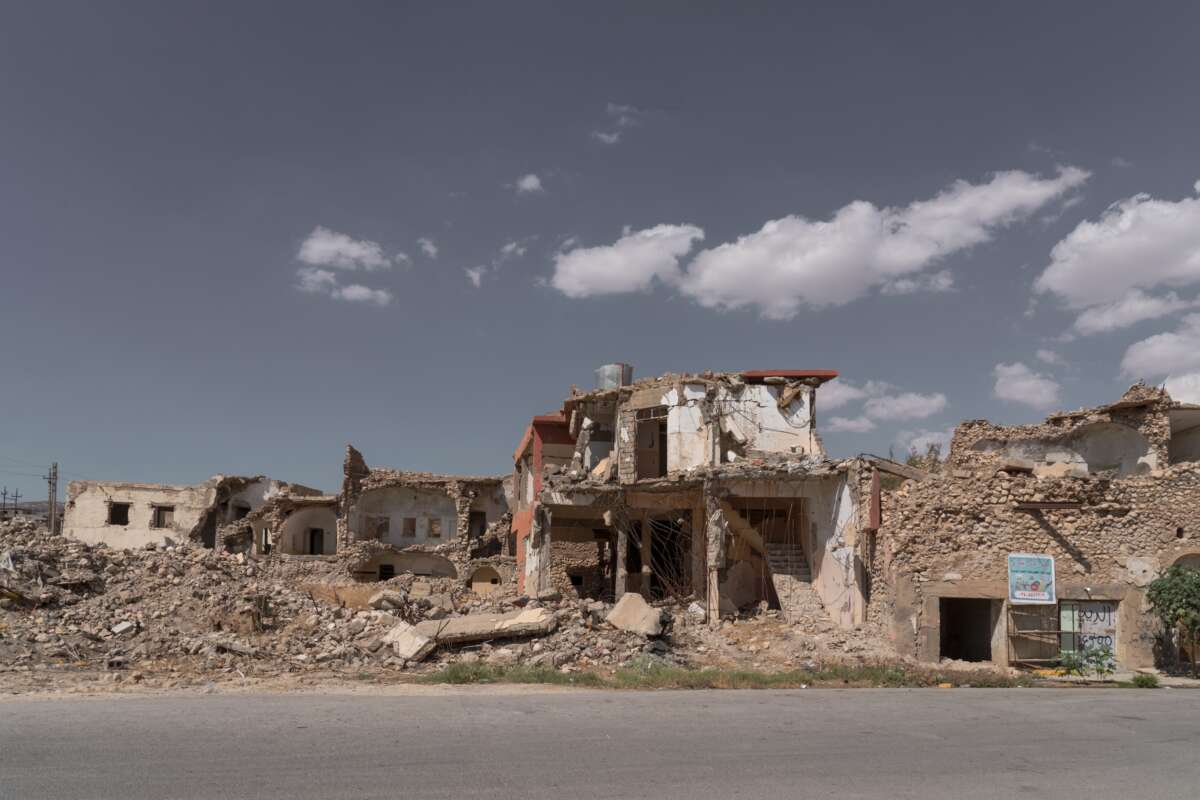
About 85 percent of Sinjar’s population was dependent on agriculture for their livelihoods before 2014. But the ISIS militants wiped out Sinjar’s natural resources, sabotaged its irrigation canals and wells, stole or destroyed farming equipment and razed the farmland. Many families also lost their documentation that proves land ownership during the chaos of fleeing their homes, leaving them without access to their properties on which to farm.
Omar Uso, 74, sits beside his two sons on a mat laid out in front of his home, which he began constructing about a year ago with help from local organizations. The family finally returned a month ago after construction was completed.
“Before ISIS, we had vehicles and a lot of livestock — over 300 sheep, but we left everything behind,” Uso tells Truthout. “ISIS burned down our homes and looted our vehicles, tractors, generators, animals, everything.” According to Uso, 70 people from his village were captured by ISIS and out of them only two elderly women survived.
“It would take a huge investment to get back all that was stolen from us and build up our farm again, and it’s just not possible right now,” Uso explains.
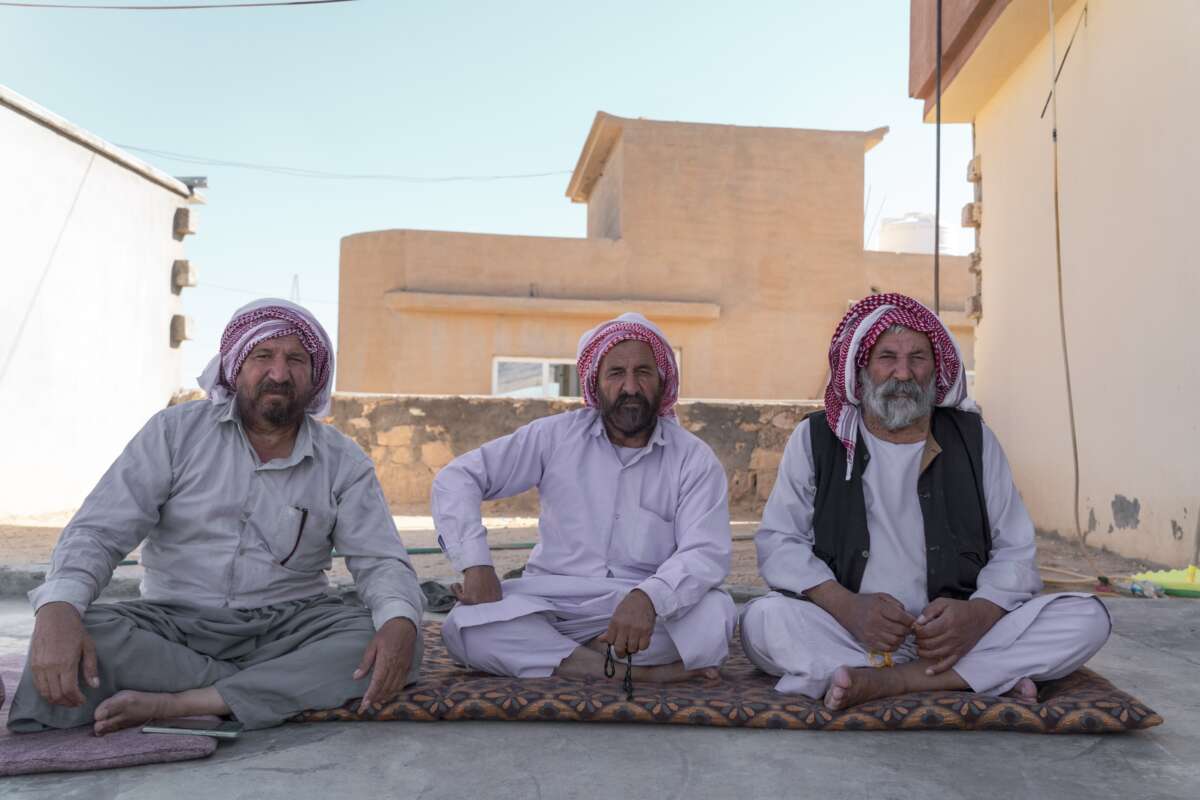
Uso says there is also rising hate speech against the Yazidi in Iraqi Kurdistan and this is driving many to return to Sinjar, despite not having proper homes or livelihoods. These tensions followed statements made last year by Qasim Shasho, a Yazidi politician and commander of the Yazidi Peshmerga unit in Sinjar, who declared that the Yazidi would always be under threat as long as “Mohammed and his religion exist”; however, Shasho claimed his words were misinterpreted and were meant only for extremist groups.
Nevertheless, this public comment elicited uproar, with some Sunni clerics making direct threats of violence against the Yazidi living in camps around Duhok in public speeches and social media. At least dozens of Yazidi families, reminded of the terror they endured in 2014, fled their homes in fear of potential attacks.
Uso’s son Barjis tells Truthout that the primary reason for him returning to Sinjar two weeks ago was due to continued feelings of insecurity in the IDP camps. “The camps don’t feel safe anymore,” Barjis says. “I had work and more opportunities in Kurdistan, but I came back here because of fear.”
“Kill Us Again”
This fear is felt throughout the entire Yazidi community in Iraq — among those returning to Sinjar and those still displaced. “Yazidi are living in total uncertainty in different environments,” explains Saido from Nadia’s Initiative. “Some are living in IDP camps and they are scared to return to their lands where they were subjected to genocide with little support to assist them in rebuilding their lives. Others are also scared of staying in the camps.”
“Wherever the Yazidi are in Iraq, they have been living in total uncertainty and insecurity for more than a decade now,” he adds. “They are still living in complete fear that something will happen to them again at any moment. It’s difficult for them to feel safe, regardless of where they are.”
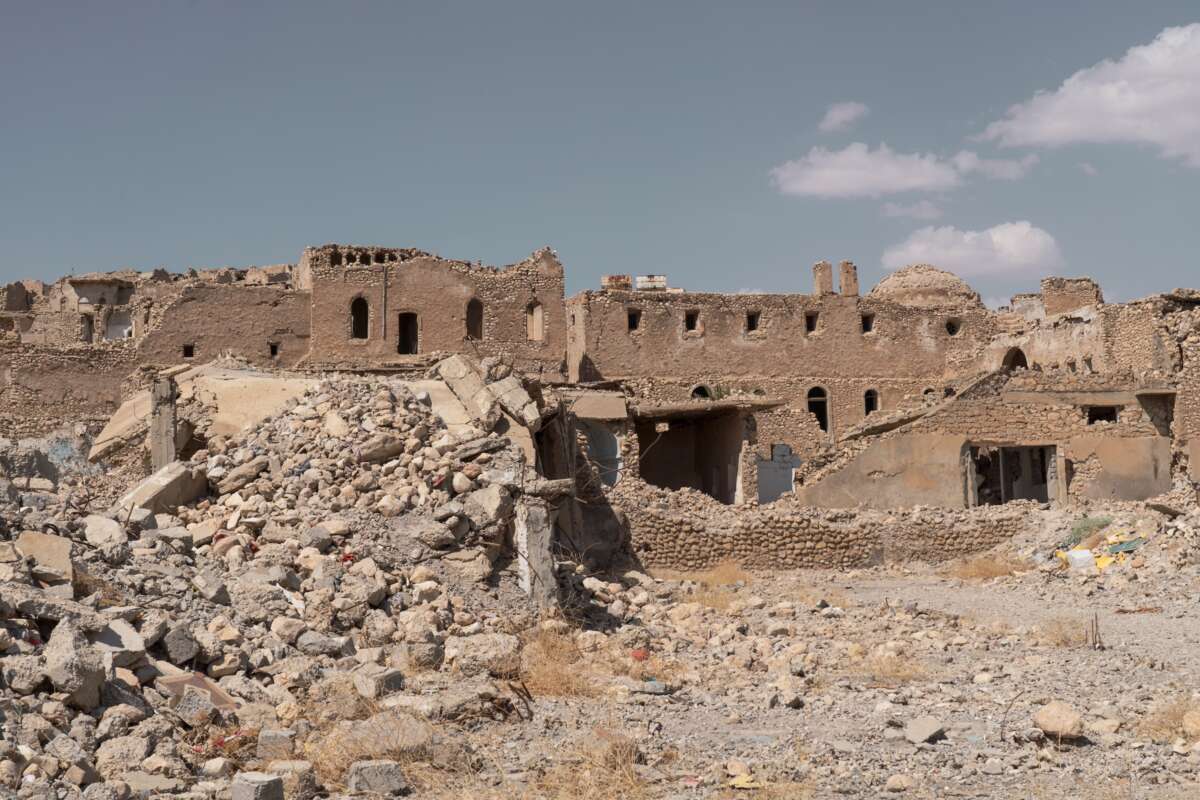
According to Saido, those returning to Sinjar are suffering from PTSD and have experienced flashbacks upon returning to their destroyed villages and homes. Shamo, who was indoctrinated to fight as a child soldier for ISIS, concedes that he is often unable to sleep. “Psychologically, I’m still not normal,” Shamo tells Truthout. “I have hope in my future here in Sinjar. But I can’t help my mind from remembering and thinking too much. It has been more than 10 years that I haven’t heard anything about my parents and brother. Even to just calm my mind down to sleep for one night is very difficult for me.”
Hussein Findi, 107, and his wife, 85-year-old Ghassal Sado, returned to their half-destroyed home in Sinjar about a month ago. They also say it was increased hate speech targeting the Yazidi in Iraqi Kurdistan that prompted them to leave the Kabarto IDP camp and return to Sinjar. “Nowhere in Iraq is safe for the Yazidi, so we might as well return to our homeland,” Findi says, seated cross-legged on the concrete floor of one of the only rooms of his home that was not destroyed by ISIS.
“But this violence is not new to the Yazidi,” Findi tells Truthout, gliding a string of prayer beads between his fingers. “What ISIS did to us is not the first genocide against the Yazidi; they have killed us before and they will kill us again.”
Historians believe that there were at least 74 different genocidal acts that were committed against the Yazidi by various actors through the centuries. The Yazidi refer to these massacres as the 74 Firmans, literally meaning an official decree or order. This word has become synonymous with genocide within the Yazidi community, because most of the episodes were committed in furtherance of Islamic Fatwas calling for violence against the Yazidi.
“The Yazidi will never be safe in this country,” Findi laments. “But if they come for us again, I would much rather be killed in my homeland than in an IDP camp.”
Press freedom is under attack
As Trump cracks down on political speech, independent media is increasingly necessary.
Truthout produces reporting you won’t see in the mainstream: journalism from the frontlines of global conflict, interviews with grassroots movement leaders, high-quality legal analysis and more.
Our work is possible thanks to reader support. Help Truthout catalyze change and social justice — make a tax-deductible monthly or one-time donation today.
